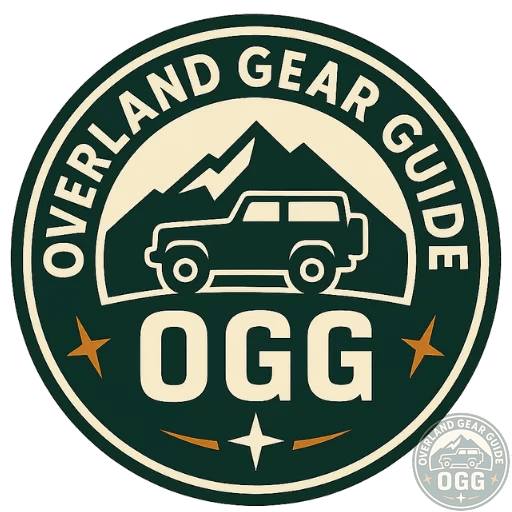The Essential Guide to 4WD Recovery Safety: 10 Rules to Get Home Safe
The greatest thrill of a 4WD is freedom—right until you’re bogged to the chassis. Getting stuck isn’t failure; getting unstuck safely is the skill. Here are ten rules to keep recoveries controlled and everyone uninjured.
Getting stuck is an inevitable part of overlanding. It’s not a sign of failure; it’s a badge of honor that proves you’re pushing the limits. But the true test of your skill isn’t getting stuck—it’s getting unstuck.
This is where the fun stops and the physics begins. A 2.5-tonne vehicle, bogged to the chassis, can require 5–15 tonnes of force to free. If that energy releases in an uncontrolled way, the results can be catastrophic. Having the right gear is only half the battle. Knowing how to use it is what ensures you drive home.
Before your next recovery, commit these rules to memory.
1) The Golden Rule: Stop, assess, and plan
- Stop digging. Momentum lost? Stop spinning—every rotation sinks you deeper.
- Diagnose the real problem: high-centered, mud suction, soft sand, or traction loss?
- Pick the safest path: forward, reverse, or a gentle side extraction.
- Use the least-risk tool first: shovel + recovery boards before winches or straps.
2) Understand the “weakest link” principle
Your recovery chain is only as strong as its weakest rated component—recovery points, shackles, straps, rope, snatch block, hitch links, and even the anchor (tree, sand anchor, second vehicle). Build a fully rated chain or don’t pull at all.
3) Know your points (and never use a tow ball)
- Do use: factory-rated recovery points or chassis-mounted aftermarket points with proper hardware.
- Never use: tow balls, suspension/axle parts, or shipping tie-down hooks. Tow balls are designed for static pull, not shock loads.
4) Use rated shackles correctly
- Choose bow shackles with a stamped WLL (e.g., 3.25t, 4.75t). Soft shackles should list MBS (minimum breaking strength).
- Fitment: seat the pin fully, then back off a quarter turn to avoid seizing under load.
- Load the bow, not the pin, and never side-load a shackle.
5) Respect the kinetic (snatch) strap
- Rating: choose ~2–3× the GVM of the lighter vehicle.
- Energy management: the strap stores huge energy—take up slack gently, use minimal run-up, avoid violent jerks.
- Never join two straps with a shackle. If extending, loop-through and insert a stick between eyes to prevent cinching.
6) Winching is a slow, steady pull
- Wear heavy leather gloves; keep hands clear of the fairlead.
- Use a tree trunk protector (never wrap the rope around the tree).
- Hook to a rated point; do not hook back to the rope.
- Spool in under light tension and keep wraps neat to avoid burying turns.
7) Always use a damper (or two)
Drape a recovery damper over the middle third of the winch line or snatch strap (use two on long pulls). If the line parts, the damper absorbs energy and drops the line.
8) Establish the danger zone and clear it
- Clear all bystanders to at least 1.5× the unstretched line length in every direction.
- Never stand inside the winch “V” or inline with the pull; position behind vehicles or well uphill.
- Use radios/hand signals; one leader runs the recovery.
9) Never, ever step over a tensioned line
Lines under load are weapons. Walk around—always.
10) A stable base is everything (jacking & digging)
- Soft ground: use a wide jack base (recovery board or timber). Bottle jacks sink without it.
- Exhaust jacks: great footprint in sand and mud.
- Hi-Lift/Farm jacks: advanced tool—unstable by nature. Solid base, slow movements, and never get under a jacked vehicle.
- Chock the wheels staying on the ground and be ready for shifts as you dig/board.
Field-tested gear that supports safe recoveries
MAXTRAX MKII Vehicle Recovery & Extraction Boards

- Original Australian-made boards with lifetime warranty.
- Fiber-reinforced nylon, glove-friendly handles, shovel ends.
- Cleats bite tread & terrain to stop rearward slide in mud/sand/snow.
- Mounts easily to most roof racks.
Rhino USA Recovery Tow Strap (3" × 20') — 31,518 lb BS

- Durable, weather-resistant polyester static strap for controlled pulls.
- Ideal for flat recoveries without shock loading.
- Triple-reinforced loop ends resist abrasion and load stress.
OPENROAD 13,500 lb Winch — Synthetic Rope + 2 Wireless Remotes

- 3/8" × 85 ft synthetic rope; 13,500 lb capacity for trucks/rigs.
- Includes control box, wired & wireless remotes, fairlead, hook, strap.
- Corrosion-resistant hardware; compact 20.8"×6.3"×9.5" design.
WARN 91575 Winch Damper (with storage pocket & reflective strips)

- Helps drop the line in a failure; increases visibility with reflectives.
- Durable vinyl, rubber-coated center to resist sliding on the rope.
- Pocket for rigging accessories; competition-compliant design.
Disclosure: Some links are affiliate links. We may earn a small commission at no extra cost to you.
Quick-reference: recovery kit checklist
| Category | Carry | Notes |
|---|---|---|
| Anchors & lines | Rated kinetic strap/rope, winch line, tree trunk protector, snatch block | Match ratings; use dampers |
| Connectors | Rated bow shackles or soft shackles | WLL/MBS clearly stamped/listed |
| Protection | Recovery dampers (1–2), gloves, line sleeves | Place mid-line (both lines if using two) |
| Air | On-board compressor, gauge, valve tools, 4-tyre kit | Set traction before you pull |
| Jacking | Bottle jack + base, exhaust jack or Hi-Lift (trained) | Never get under a jacked vehicle |
| Dig & traction | Shovel, recovery boards | Often the safest first move |
| Comms | UHF/GMRS radios, hand signals plan | One leader calls the shots |
| Safety | Fire extinguisher, eye protection | Keep close at hand |
© Overland Gear Guide — Independent overland skills & gear for the 4×4 community


